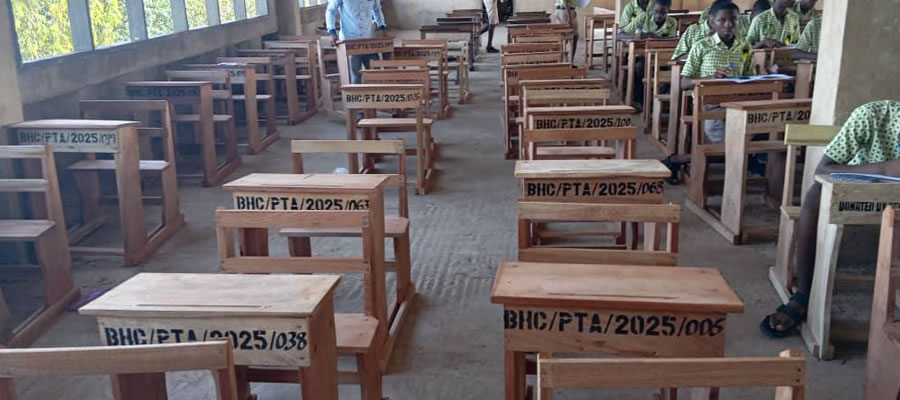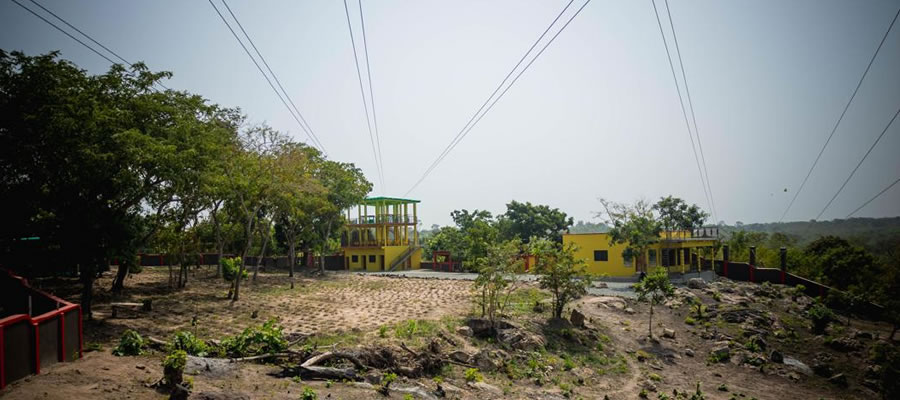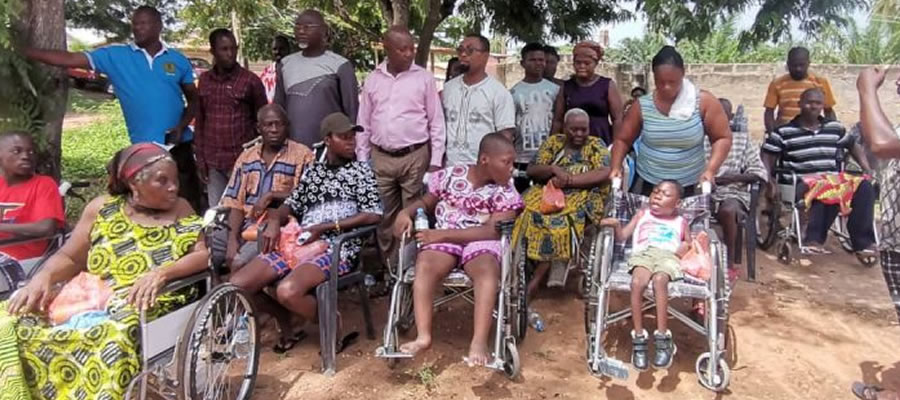

Population Size and Growth
Available data form 1970, 1984 and 2000 census’, suggests a persistent rise of the Municipality’s population in absolute terms. The data indicates inter censual growth rate of 2.7% between 1970 and 1984 and 0.9% between 1984 and 2000. The growth rate between 1970 and 2000 was 1.7%. This suggests that the Municipality’s population increased by 15% over 1984, a count, which is lower than the regional figure of 35% for the same period.
The Census Report for 2000 indicates that the total population of the Municipality represents only 4.6% of the total Volta Region and it is growing at a very slow rate. The decrease in the population growth of the Municipality from 2.7% in 1984 to 0.9% in 2000 can be attributed to various factors.
One of such factors considered to be responsible for the decline in the population growth rate, is the introduction and acceptance of the family planning programme. The second possible cause of this phenomenon is the fact that, many of the youth have migrated to urban towns and cities in Accra, Kumasi in search of jobs since there are no industrial investments to absorb them and most importantly because of the decline in fish resource from the lake. The table below shows the population of the Municipality.
The projected population for 2005 and 2009 were made under the assumption that the growth rate will increase to a constant level, equal to the regional growth rate over the projected period due to interventions that are more likely to improve socio-economic conditions of the Municipality.
Population Structure
The population structure of the Municipality bears resemblance to the Structure of Developing Countries. The population structure is therefore young, with about 38.1% aged between 0 – 14 but lower than the Regional Average of 41.1%.The Age population of 60 years and above, accounts for 9.8%, while the economically active population of 15 years to 59 years is represented by 52%. The Population pyramid is therefore bell-shaped with a broad base, which tapers off with increasing age. With a young population, the Municipality has a high dependency ratio. There are however, exceptions in the age groups 5 – 9 years, 55 – 59 years and 60–64 years, which have a larger population than those of their immediate younger groups, for both male and female. With increasing age, the structure looks slightly thinner for the males than for the females, indicating that, at the older ages the population of males is lower than that of the females except for the age group 15–19.
The 75 years and older age group include ages from 75–99 years and shows an unusual broad top, always suggesting that there are more females living longer than males, particularly at the older ages. The table below illustrates the age structure
The above table suggests that 38.1% of the population is under 15 years and 9.8% of the population is above 60years. The dependency population i.e. (0 – 14) years and 60 years and above, is 47.9%. This implies that 52.1 % of the population is in the action age group.
Rural/Urban Split
The rural/urban classification of localities is population based. This means that a settlement with a population of size 5000 or more is classified as urban and a settlement with less than 5000 people is considered rural. Based on this classification, Kpando Municipality can be considered as Rural since 76% of the population lives in the rural area, whereas only 24% are in the urban area. This means that there is only One (1) settlement with population of more than 5000 which is the Municipal Capital; Kpando. About 26 communities make up the Municipality. The Urban/Rural Population distribution is highly skewed in favor of the rural areas
SPATIAL ANALYSIS (HIERARCHY OF SETTLEMENTS)
The hierarchy of services and infrastructure are interrelated to the growth and size of settlements. The bigger settlements tend to develop along the trunk road that traverses the Municipality.
Naturally, the size of a settlement tends to determine the level of services and infrastructure available. The data available makes Kpando the only settlement in the Municipality performing the highest level of functions. There is high concentration of social and economic infrastructure such as health postal, banking, police and higher education service facilities available in the first level function in the hierarchy of settlements.
Apart from Kpando, Two (2) other settlements are classified under the second level of function. These are Kpando-Torkor and Fesi. The next functional level includes settlements such as Sovie and Gbefi. These settlements tend to be located closer to the second functional level settlements. The majority of the people in this third level of settlement are mainly peasant farmers with low level of commercial activities.
The other functional level classified as the fourth level performs the least function with lower concentration of Socio-Economic infrastructure. Most of the people at this level are also peasant farmers and situated far away from important social services.
Population Management
Data from the 2000 census indicates that the Municipality’s total fertility rate (TFR) of 3.6 is slightly higher than the regional average of 3.5 and lower than the National TFR of 4.0. Detail of data computed for the Municipality suggests that women aged 25 – 29 years tend to contribute more than average fertility in the Municipality. This shows that Kpando Municipality contributes to young age, teenage fertility. It can be deduced that the Municipality had experienced a fall in the fertility rate and that the fall was more than the National average.
It can be concluded that the fall in the TFR may have been caused by public education on the family planning programme and the strong desire of women to achieve high academic excellence. In effect, that fall in the TFR may be responsible for the decline in the total population growth rate of the Municipality.
Date Created : 11/21/2017 7:15:56 AM











 facebook
facebook
 twitter
twitter
 Youtube
Youtube
 +233 593 831 280
+233 593 831 280 0800 430 430
0800 430 430 GPS: GE-231-4383
GPS: GE-231-4383 info@ghanadistricts.com
info@ghanadistricts.com Box GP1044, Accra, Ghana
Box GP1044, Accra, Ghana